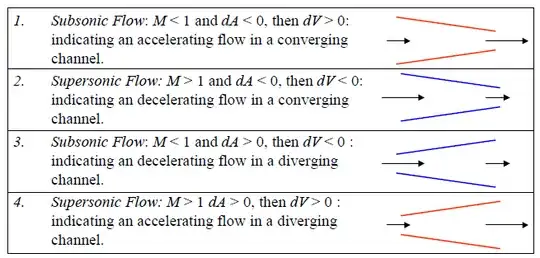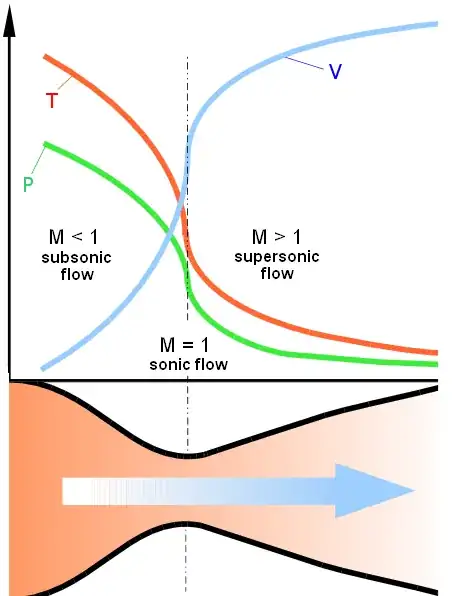If pressure difference driving the flow is constant, then it is not obvious that introducing a constriction in the flow will necessarily increase the flow speed there (compared to the flow speed before the constriction was introduced). Flow driven by a constant pressure difference occurs for example when water flows through a pipe attached to an overhead tank (at least over a time scale in which the water level in the tank doesn't change significantly).
Say the flow rate $Q$ depends on pressure drop $\Delta p$ according to the following relation: $Q=B(\Delta p)^n$, in which $B$ is an empirical constant and $n>0$. The magnitude of $A$ depends on the geometry of the pipe (among other factors), and in particular on whether a constriction is present or not. Let $B_0$ be its value when there is no constriction, and $B_c$ its value when the constriction is present. Since constriction increases resistance to flow we must have $B_c\leq B_0$.
Let $A_0$ and $A_c$ be the cross-sectional area of the unconstricted and constricted portion of pipe respectively ($A_c\leq A_0$). When there is no constriction, the average flow speed $v_0=Q_0/A_0=(B_0/A_0)(\Delta p)^n$, and when there is constriction the average flow speed is $v_c=Q_c/A_c=(B_c/A_c)(\Delta p)^n$, assuming that the pressure difference across the pipe is the same in both cases. Therefore:
$$\frac{v_c}{v_0}=\frac{B_c}{A_c}\frac{A_0}{B_0}$$
Now we know that when the area of the constriction becomes zero, there can be no flow, i.e $v_c=0$ when $A_c=0$. For this to happen without a jump, we must have the ratio $B_c/A_c\to0$ as $A_c\to0$, which means that asymptotically $B_c/A_c\sim A_c^m$ as $A_c\to0$, where $m>0$. Therefore we must have the following asymptotic behaviour:
$$\frac{v_c}{v_0}\sim A_c^m\frac{A_0}{B_0},\quad m>0\quad (A_c\to0)$$
Therefore, for a given $A_0,B_0$, there is a particular value of the area of constriction $A_c$ below which the flow speed actually reduces compared to the case before the constriction was introduced. This argument doesn't assume a compressible flow.

